Culloden – The Jacobite’s Ugly Ending
This is my fifteenth post on last summer’s inaugural Medieval Britain tour by Canadian military specialists Liberation Tours and it’s the only post in which you are going to see that the weather was typically British. I don’t know what gods they prayed to, but until today the weather has been perfect. Yesterday we were at Scone Palace and tour leader Phil Craig was able to give his presentations clad in shorts and sandals. Today we are headed for the site of the Battle of Culloden Moor and somehow shitty weather seems appropriate, because Culloden was a very shitty day for the Jacobite followers of Bonnie Prince Charlie. It was the last battle fought on land in Great Britain and paved the way for a continuation of British rulers of German descent that exists to this day. Please join us in learning more about this much ballyhooed battle that has been so historically distorted that knowing what really happened and why is only now becoming apparent over 270 years later.
The Background to Culloden
Explaining the numerous Jacobite Rebellions that started almost from the moment that King James II was ousted in the so-called Glorious Revolution by William of Orange and his wife Mary, James’ daughter, would take up the rest of this post and many more. So I’m going to let this video give you the background in only three minutes.
So by the time 1745 rolled around and Bonnie Prince Charlie stepped foot on British soil (Scottish actually), the supporters of the Stuart claim had been at it for over fifty years. In the interim the British army had evolved from a combination of part timers, volunteers, conscripts and mercenaries into a formidable fighting force that would go on to win the Seven Year’s War and ultimately defeat Napoleon in the early 1800’s. However, the Jacobites were far from the primitive, claymore wielding clansmen that were portrayed in Peter Watkin’s 1964 film, Culloden which by his own admission he made as a deliberate statement against the tactics used by the Americans in the Vietnam War. In other words, it was totally one sided – cannons and muskets against swords and shields. It caused a sensation at the time and I remember it was actually shown in my classroom after which we all unanimously agreed that the British were bastards and the “Highlanders” the real heroes.
Well, here’s the real truth as explained by an article from The Conversation which relies upon facts and research rather than accepted wisdom. It was not a battle between Highland clans and the British. It was not a battle between Protestants and Catholics. It was not a battle between swords and muskets. The only thing Peter Watkin’s and I would agree upon is that Bonnie Prince Charlie was a useless fop.
In a nutshell, if you were an oddsmaker laying bets on the outcome of the Battle of Culloden as if it were a football game, the British would be about a six point favourite. That definitely would not guarantee a win and a Scottish victory would not have been an upset on the magnitude of the Jets over the Colts in Superbowl III.
So let’s get on with the visit.
Visiting Culloden
Culloden lies just five miles (8kms.) east of the small city of Inverness where we arrived the night before. Our winning streak of beautifully warm and sunny days has come to an end. The morning is misty with intermittent rain and the type of chill that gets right into your bones. Fittingly perhaps, this is exactly the type of weather in which the Battle of Culloden was fought, although it was even colder with the rain turning to sleet in places.
Culloden is managed by the Scottish National Trust which has kept the battlefield in as close proximity to what it was like in 1746 as is possible, although what was once a moor is more decidedly open fields today. However, the rain is doing its best to recreate a moor on this morning.
The bus pulled into the parking lot which was already half full despite the weather. Although you can tour the battlefield without having to pay because it is an official war graves site, one would be amiss to avoid the well designed Visitor Centre. Obviously, given the sunny weather, I did not take this photograph, but it gives a good angle of the combination of sweeping curves and straight lines that make it visually appealing.
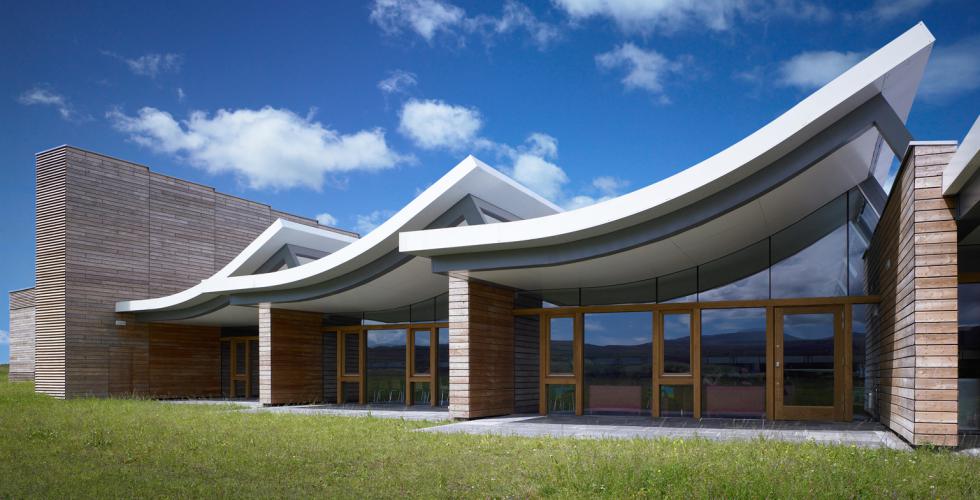
Because of the weather at least 95% of the people who were visiting Culloden this morning were staying put in the Visitor Centre which made it pretty crowded. The starting point is to take a walk through the interactive exhibits using the hand-held guides that you are provided with. These give a lot of information about the events leading up to the battle with the Jacobite’s story on one side of the wall and the British on the other. This attempt to ‘walk the line’ between both sides was interesting, but at times a bit confusing. The interpretive walk ends with a visit to the 360° Battle Immersion Theatre where you are surrounded on all sides by the combatants. It does get your pulse racing and stimulates the desire to get out on the actual battlefield.
Walking the Battlefield
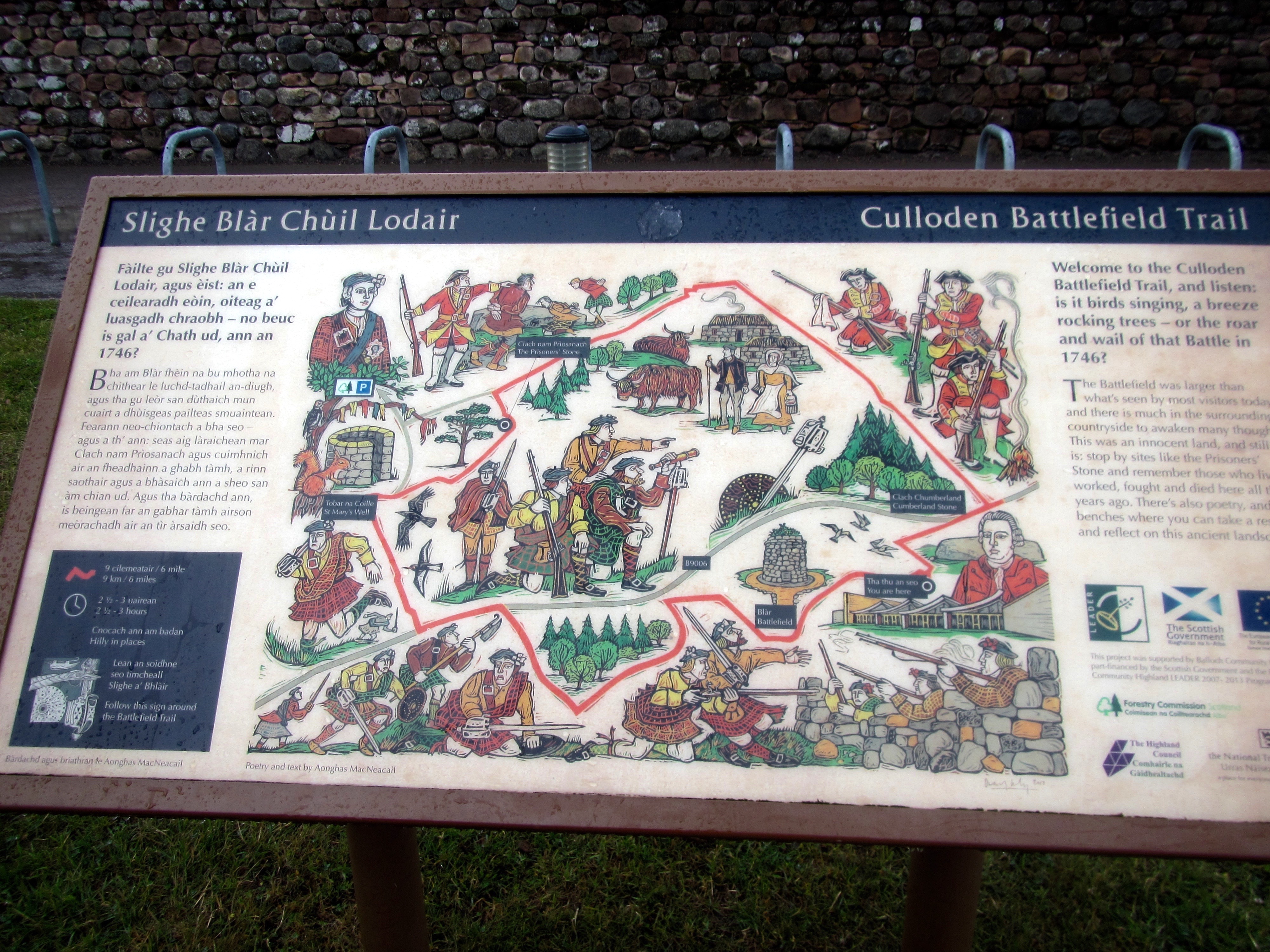
While it would have been nice to have a guided tour, that was just not practicable on a day like this. Very few in our group opted to go much farther than this map of the Culloden Battlefield Trail. However, Alison and I and my sister Anne who had a special mission, all set out to at least see the major points of interest. This is basically what the trail looked like with the grassy sodden fields on each side. Our destination was well beyond that red flag.
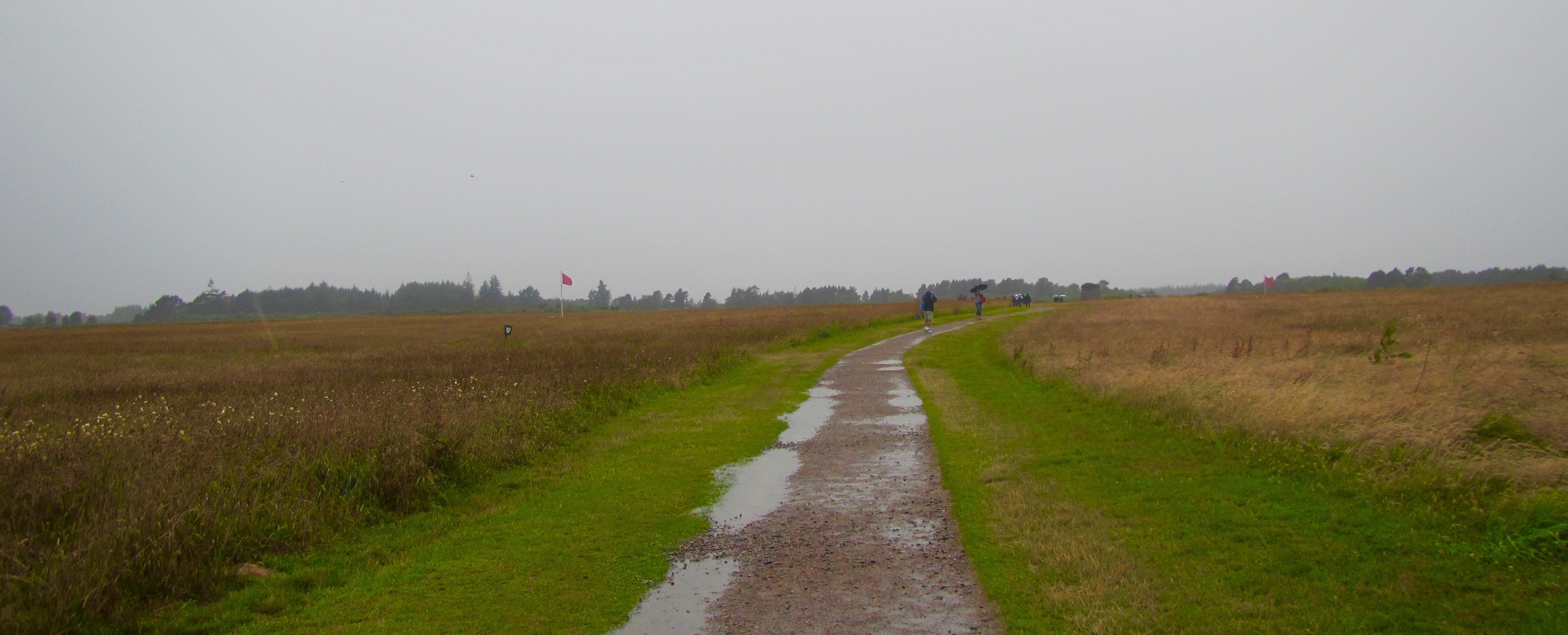
The most significant point of interest is the Culloden Memorial which was erected in 1881 in the area where it was believed that most of the Jacobite troops fell.
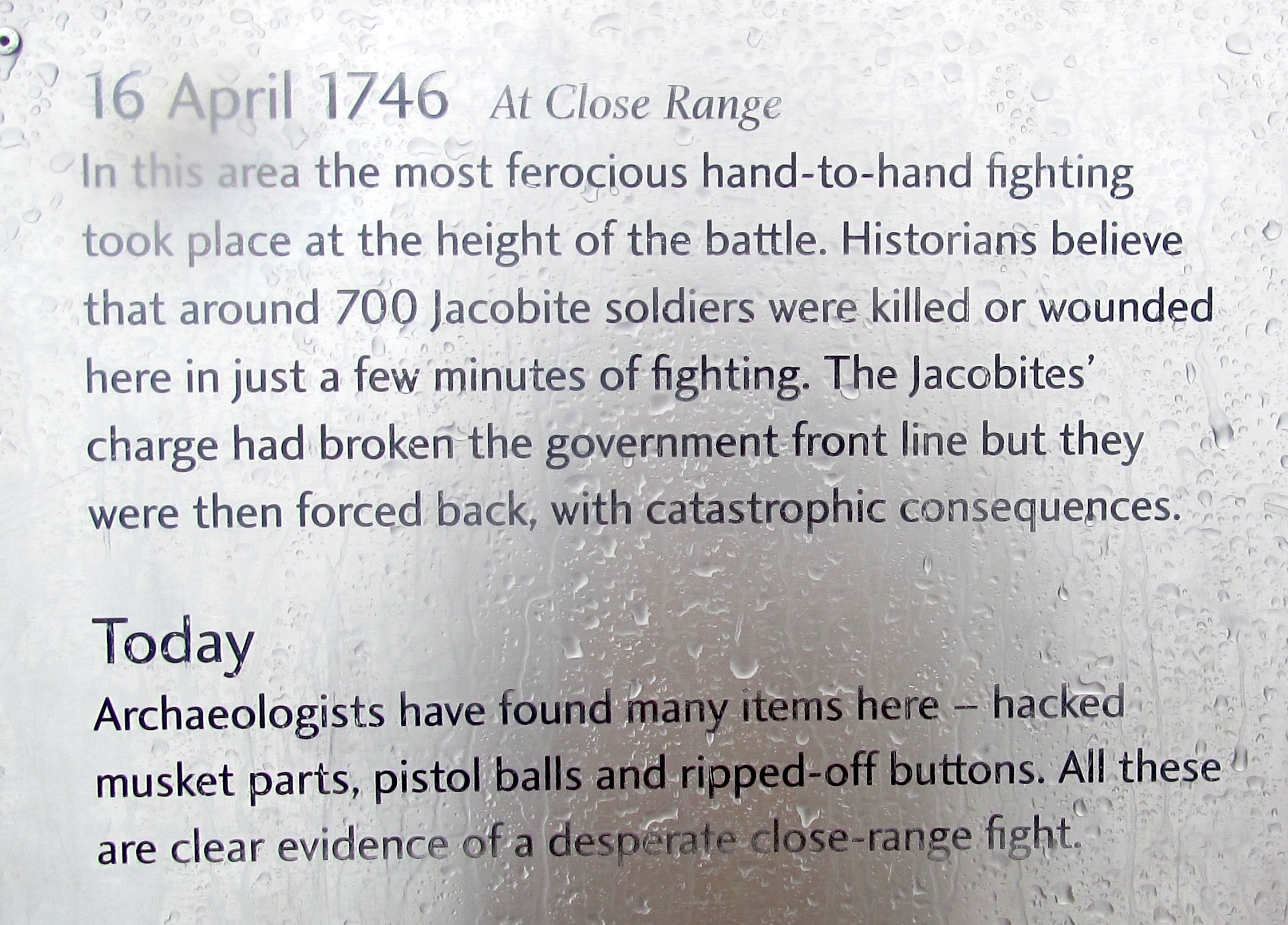
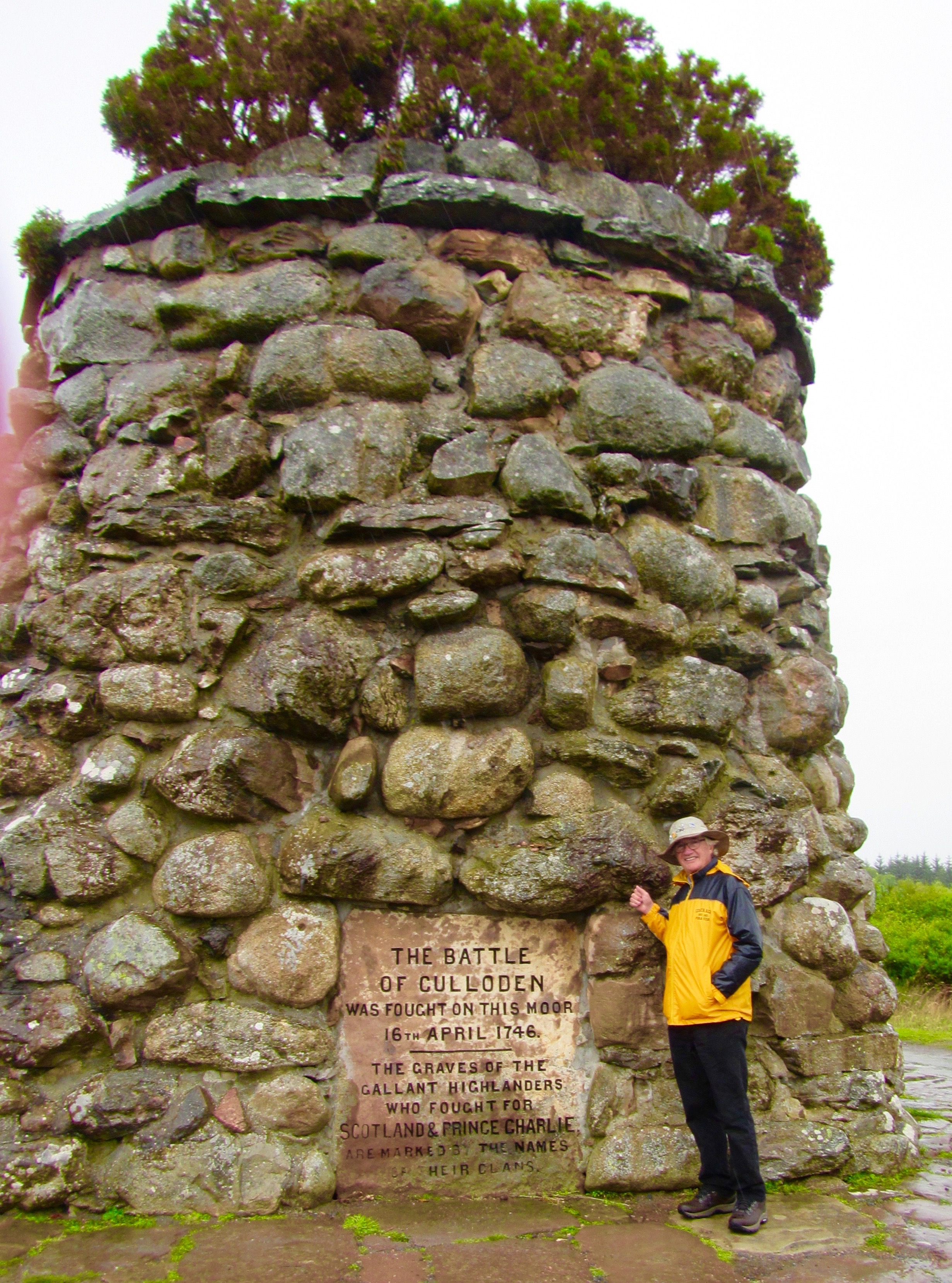
At the same time as the memorial was erected stones marking the mass graves of various clans were placed nearby. Here are the Camerons, who under the leadership of Donald Cameron known as the ‘Gentle Lochiel’, supported the Jacobite cause from day one. Their reward was to have around 400 of the 700 hundred men who arrived at Culloden killed or wounded. It is estimated that 250 were killed outright and all but 17 of the wounded dispatched after the battle by being bayoneted where they lay. Donald Cameron was dragged off the battlefield after having his ankles shattered by grapeshot. He spent the rest of his life as an exile in France and is buried there far from his beloved Lochiel.
James Wolfe who fought with the British at Culloden before becoming famous for taking Quebec, commented that the Cameron’s were the best and most courageous of the Jacobite forces.
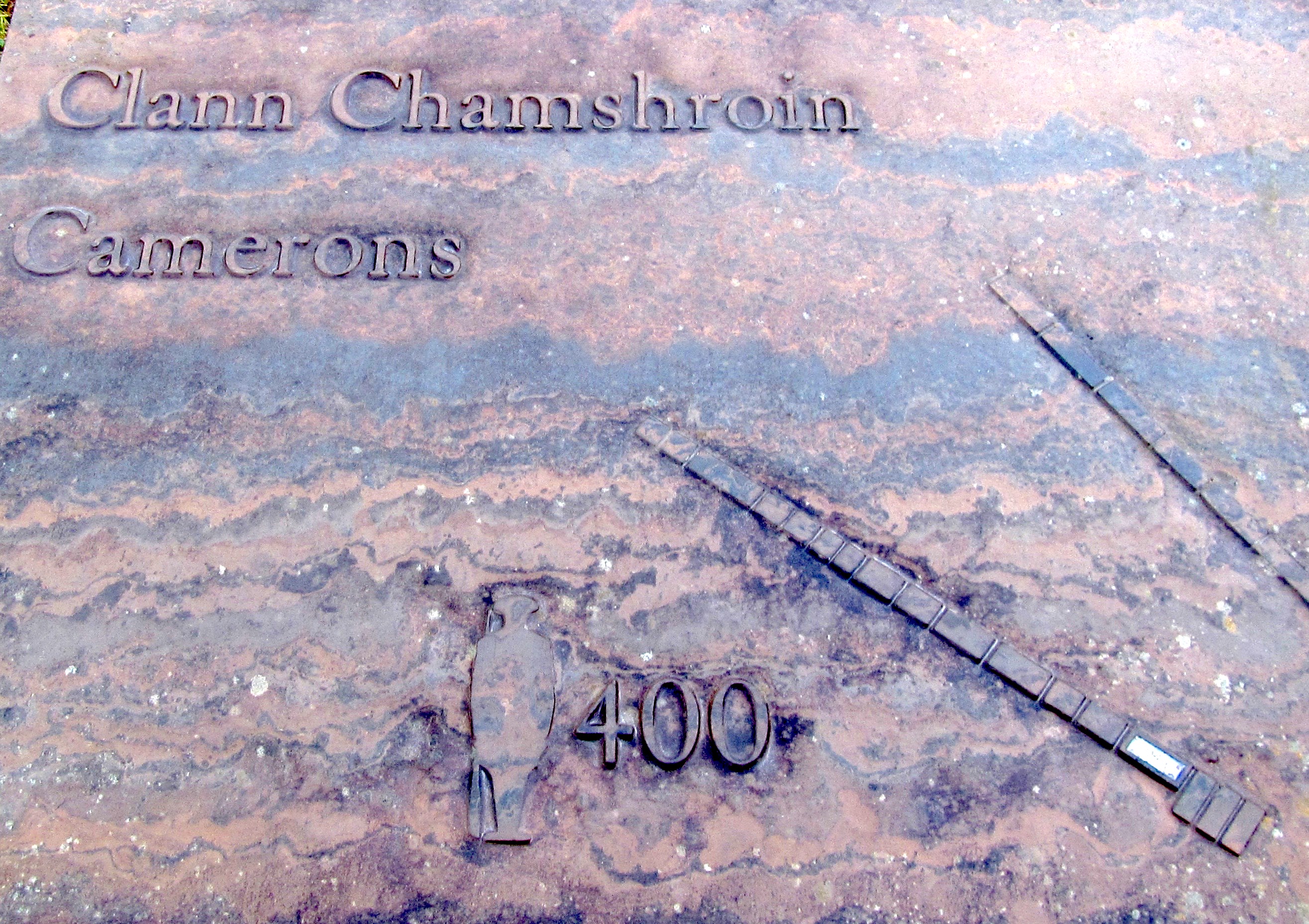
Here lie the Fraser’s who are still getting flowers to this day. They have an interesting history relating to their uncanny ability to switch loyalties when necessary in order to survive. Originally Simon Fraser, 11th Lord Lovat aka ‘The Fox’, was a supporter of the Hanoverians, but threw his lot in with the Jacobites, although he was too old to fight and sent his son, also Simon, instead. Like father, like son, it is alleged that after surviving the battle young Simon switched sides and turned on the fleeing Jacobites. He received a very lenient one year sentence and later fought alongside General Wolfe at Quebec. His father, having switched sides one too many times, was hunted down and executed in London in 1747.
The actual military leader of the Fraser’s at Culloden was Charles Fraser who was severely wounded and later shot by a common soldier on the orders of General Hawley after Wolfe refused to do so.
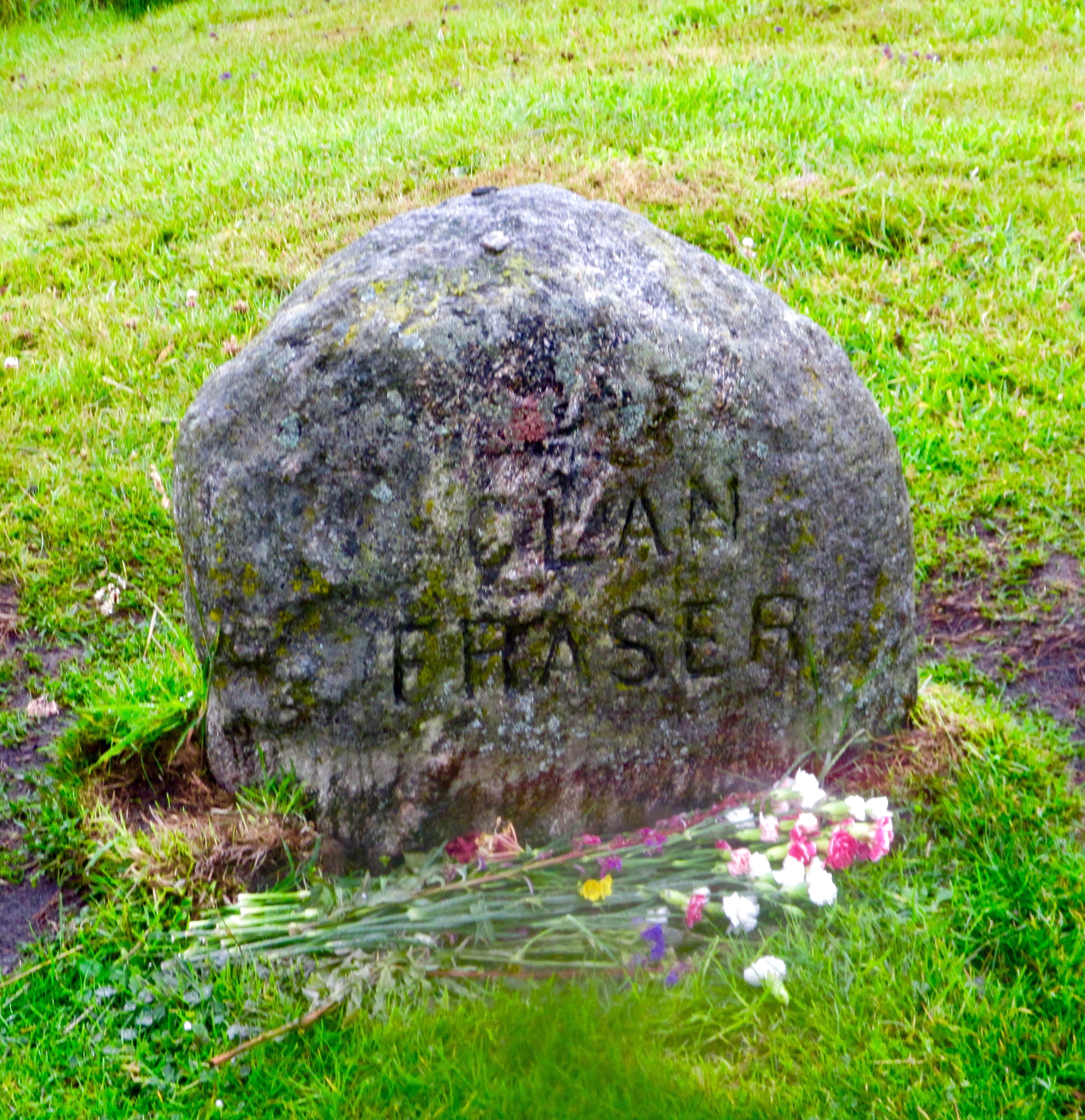
By now we had reached a point quite far from the Visitor Centre that marked the spot from which the Jacobite troops began their advance. I was able to stand on the fence and take this video of the Culloden Battlefield.
I mentioned that my sister Anne had a special mission at Culloden and that was to spread the ashes of her late husband Bruce Dryburgh, who despite being of Lowland Scots extraction, was a firm believer in Scottish independence. He now shares this space with the hundreds of other Scots, English, Irish and French who died here on April 16, 1746.
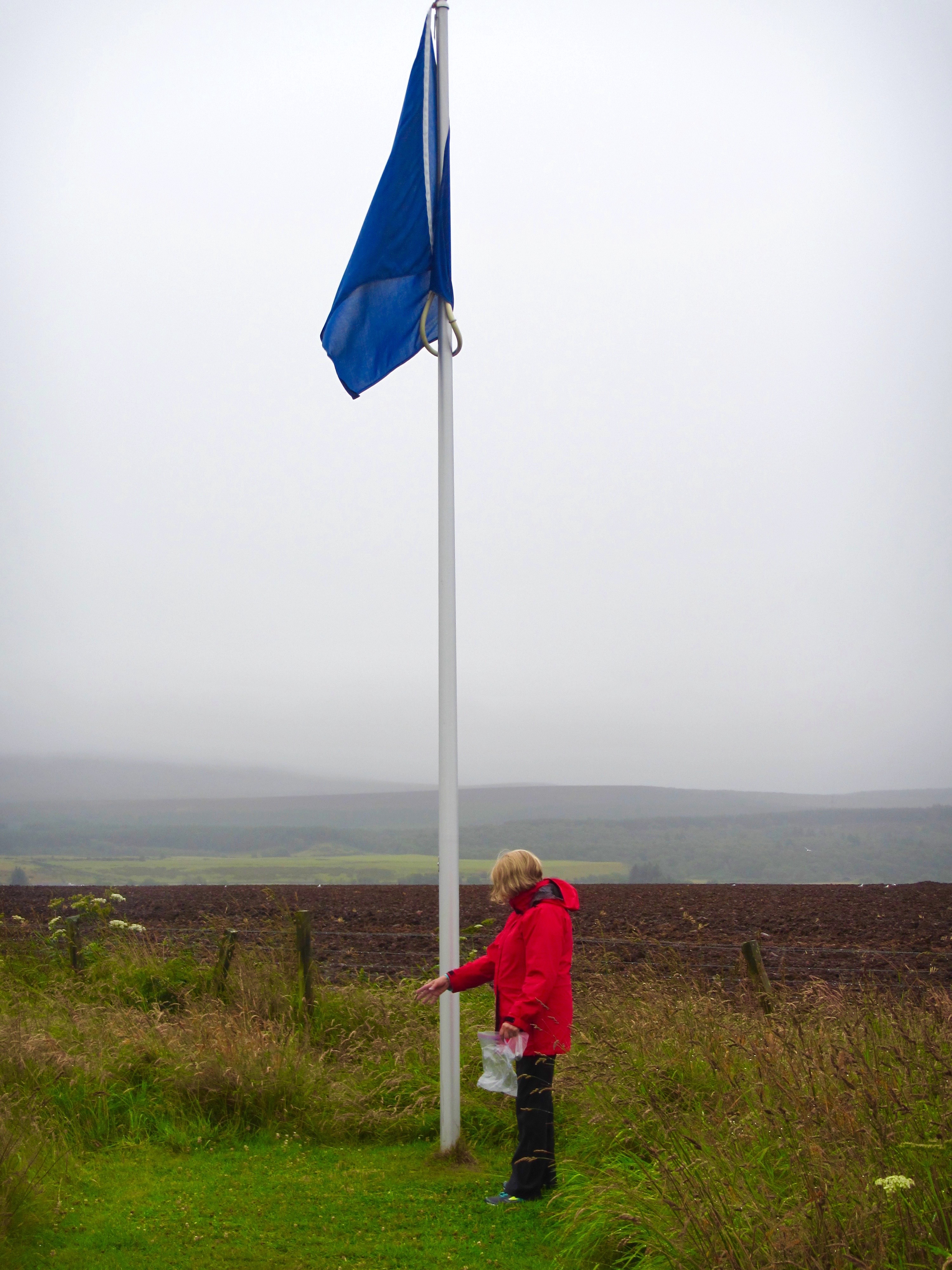
I’ve visited more battlefields over my lifetime than some people might think is healthy for the mind and soul. Every one affects me differently. Some, like Hastings are so far in the past that they are of interest only in an historical sense. Others like Gettysburg are fascinating for the tactics and strategy involved. Still others like Beaumont Hamel incite such a sense of rage at the stupidity and uselessness of it all I am on edge for days after. Rarely, such at Juno Beach, I actually feel proud of what was accomplished there. At Culloden, as I mentioned to Phil in the bus afterward, I really felt almost nothing. Trying to figure out why this battlefield did not move me, one way or another as others did, I realized that it was because I did not believe Bonnie Prince Charlie was a man worth following. He was not bonnie, meaning handsome or comely, unless you like the look of a stuck up prig. He certainly did not act Princely, always leading from the rear and fleeing at the first sign of trouble. I will give him that he was a Charlie, but a Charlie with the ineptness of Charlie Brown.
In other words, whether it was a fair fight or not, these men did not deserve to die for a Pretender.

